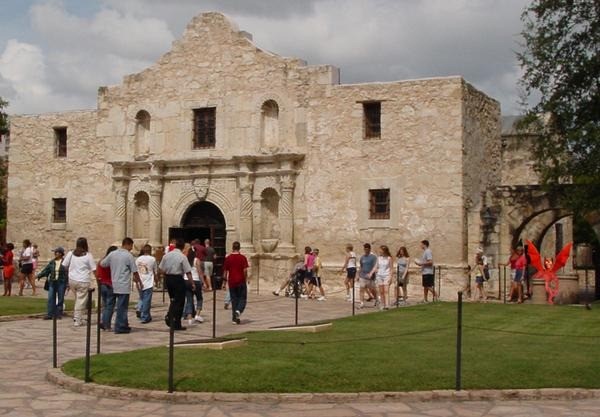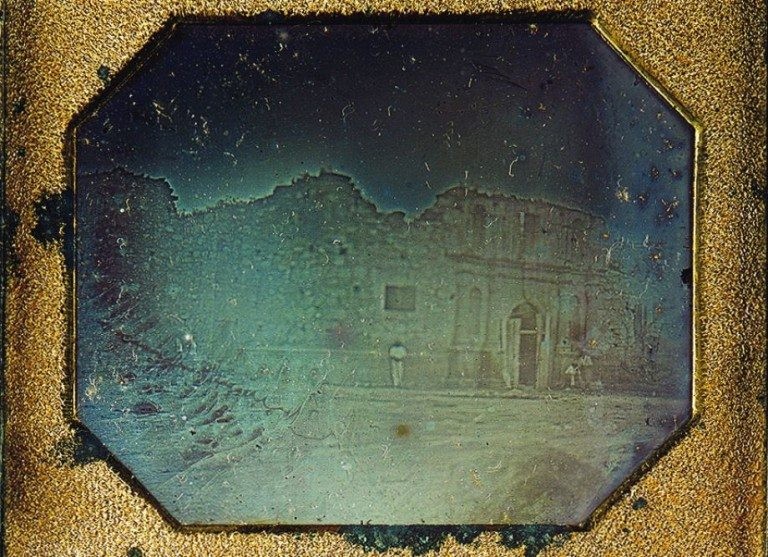The Alamo
Introduction
Text-to-speech Audio
Images
Spain established the Alamo mission in 1718. It would eventually become the site of one of the most famous battles in American history. Photo Credit: http://pdxretro.com/2013/02/remembering-the-alamo/

This painting depicts the battle. Photo Credit: http://www.eoilangreo.net/herminio/culture/elalamo.htm

The oldest known photo of The Alamo.

Backstory and Context
Text-to-speech Audio
The Alamo was originally called Mission San Antonio de Valero and was founded in 1718. The church was built between 1744-1757. The mission was one of five established by Spain along the San Antonio River in the 1700s. Its original purpose was to serve as a way station for missions in East Texas (these would eventually fail and two moved to San Antonio). The missions were part of Spain's effort to extend its empire in the Southwest and prevent France from doing the same from Louisiana.
Conflict arose as a result of Mexico encouraging Americans to move to Texas, offering acres of land on the condition that they convert to Catholicism. However, once in Texas, settlers did not follow through with this which of course angered the Mexican government. Other sources of conflict included slavery, Federalism, and immigrant rights. Texans began taking steps to declare independence in 1835 and were able to drive Mexican forces out on December 11, 1835.
To put an end to the Texas Revolution, Mexican General Santa Anna built an army of 6,000 men. Upon reaching the Alamo on the 23 of February, he asked its inhabitants to surrender. After a Texan cannon was fired in response, Santa Ana gave orders to begin the siege, which lasted two weeks. Reinforcements to the Alamo never showed up despite the many calls for help from leaders, such as William B. Travis.
Sources
"Chronology." The Alamo. Accessed February 11, 2015. http://www.thealamo.org/remember/history/chronology/index.html.
Heintzelman, Patricia. "The Alamo." National Park Service - National Register of Historic Places Nomination Form. October 15, 1966. https://npgallery.nps.gov/GetAsset/6ba0f2b3-fac3-4a4e-8714-513e43431ab4.
"Texas Revolution: Battle of the Alamo." ThoughtCo. Accessed February 11, 2015. http://militaryhistory.about.com/od/battleswars1800s/p/alamo.htm.
"William Barret Travis' Letter from the Alamo." Sons of Dewitt Colony. Accessed February 11, 2015. http://www.tamu.edu/faculty/ccbn/dewitt/adp/history/bios/travis/travtext.html.


